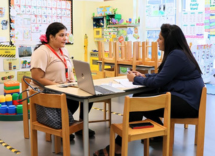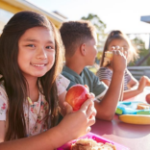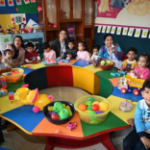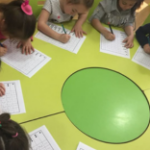
Parent-teacher communication is a very significant part of early childhood education. It establishes a mutual partnership between parents and teachers to work in harmony toward child growth and development. The two will be able to share insights, concerns, and progress updates, thus maintaining consistency and nurturing environments for the child at school and at home.
The Power of Open Communication
1. Shared Understanding of the Child:
Parents and teachers are given information about a child’s interests, strengths, and challenges, helping teachers understand better the child’s needs. More personalized support is possible by collaborating with parents and allowing an environment where the child can thrive. Parents may share relevant observations from home that will help teachers create better learning strategies.
2. Emotional and Social Support:
This communication loop between the parents and teachers ensures a sense of emotional security in children. When a child witnesses parents and teachers working together as a team, this augments their feeling of being safe and supported. For early childhood, it is imperative because children are building up social and emotional skills. They learn the value of relationships, trust, and teamwork from this partnership.
3. Addressing Behavioral Concerns Early On:
Regular communication can provide the parents and teachers a clear indication of behavioral concerns or developmental delays at an early stage. This ensures children get support in time when needed. If a child cannot handle a particular behavior or social skill, it provides a good opportunity for the collaboration of parents and teachers to find effective solutions or strategies to help the child improve that aspect.
4. Encouraging Progress and Achievement:
The most important aspect of parent-teacher communication is the reinforcement of progress. The teacher can inform the parent about how the child is doing academically and socially, and the parent can reinforce the praise in the home environment. The reinforcement of milestones, whether academic or behavioral, will boost the child’s confidence and motivate a positive attitude towards learning. When parents and teachers celebrate the achievements of a child together, it strengthens the child’s motivation and eagerness to learn.
Practical Ways to Foster Communication
1. Regular Parent-Teacher Meetings:
Scheduled conferences provide an excellent opportunity for parents and teachers to discuss the child’s progress in person. These meetings offer the chance to address concerns and set future learning goals. When meeting face-to-face, the conversation is likely to be focused and comprehensive and will help to establish a closer connection between home and school.
2. Daily or Weekly Updates:
It will also help the parents stay updated on what their child is learning in school, using daily or weekly communication methods such as journals, emails, or apps. This allows the parents to reinforce the same concepts at home and ask the child about their day, which reinforces the learning process. This may include academic progress, social interactions, or any behavioral observations.
3. Active Listening:
Communication will be most effective if there will be two-way listening; the teacher listens to the parents on their concern about their child’s behavior or development, while the parents also listen to teachers’ observations and advice. This two-way communication will involve both parties with regards to working towards the same goal: that is, providing support for the child’s growth and development.
4. Consistent Positive Reinforcement:
The reinforcement of positive behaviors on both school and home grounds builds the child’s self-esteem. Teachers and parents’ recognition of accomplishments as well as good behavior encourage a child to repeat the actions. Positive reinforcement can be as simple as praising a child for his or her good choice or making the child feel proud of their academic achievements.
Impact on Child Development
When parents and teachers are in constant communication, the children benefit a lot. This collaboration ensures that there is a consistent approach to problems and successes. Children learn to trust that they have a team working with their best interests in mind. They tend to feel more secure in their environment, which supports their emotional, social, and academic growth.
In addition, they begin to recognize the value of working together or cooperating. As they start to witness how their parents and teachers collaborate with one another, they learn proper communication, teamwork, and problem-solving skills that children can take into life.
Conclusion
Effective early learning often begins with open, predictable communication between the child and the parents as well as among the teachers. Such mutual collaboration sets a conducive background where children can grow emotionally, socially, and academically. At Tiny Tots English School, Pimpri-Chinchwad, Pune, we do value this partnership and consider continuous communication between parents and teachers to ensure that the best possible educational experience takes place for each child. This way, together, we build a nurturing environment where children are set up to succeed, growing into confident and well-rounded individuals ready to face the challenges of life.




